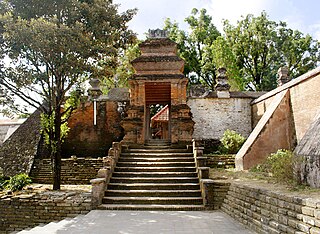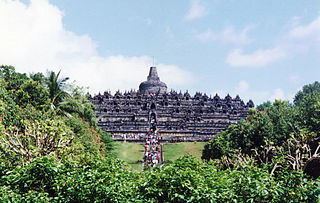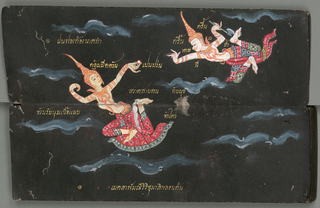
The Sultanate of Mataram was the last major independent Javanese kingdom on the island of Java before it was colonised by the Dutch. It was the dominant political force radiating from the interior of Central Java from the late 16th century until the beginning of the 18th century.

Suzzanna Martha Frederika van Osch was an Indonesian actress. Known as the "Queen of Indonesian horror", she is well-known in particular in Indonesia for portraying spirits, witches, and other supernatural beings. She was crowned the best female antagonist in Indonesian film industry along with Ruth Pelupessy and Mieke Wijaya.

Kotagede is a city district (kemantren) and a historic neighborhood in Yogyakarta, Special Region of Yogyakarta, Indonesia. Kotagede contains the remains of the first capital of Mataram Sultanate, established in the 16th century. Some of the remains of the old Kotagede are remains of the palace, the royal cemetery, the royal mosque, and defensive walls and moats. Kotagede is well known internationally for its silver crafting.

Pemalang Regency is a regency on the north coast of Central Java province in Indonesia. Its capital is the town of Pemalang. The regency is bordered by the Java Sea in the north, in the east by Pekalongan Regency, by Purbalingga Regency in the south, and by Tegal Regency in the west. It covers an area of 1,115.30 km2, and it had a population of 1,261,353 at the 2010 Census and 1,471,489 at the 2020 Census; the official estimate as at mid 2023 was 1,523,622.

Amangkurat II was the susuhunan of the Sultanate of Mataram from 1677 to 1703. Before taking the throne, he was the crown prince and had the title Pangeran Adipati Anom.

Nyi Roro Kidul is a supernatural being in Indonesian folklore. She is the Queen of the Southern Sea in Sundanese and Javanese mythology.

Folklore of Indonesia is known in Indonesian as dongeng, cerita rakyat or folklor, refer to any folklore found in Indonesia. Its origins are probably an oral culture, with a range of stories of heroes associated with wayang and other forms of theatre, transmitted outside of a written culture. Folklore in Indonesia are closely connected with mythology.

Palabuhanratu or Pelabuhan Ratu is a district and fishing town which serves as the regency seat of Sukabumi Regency. It is at the southwest coast of Palabuhanratu Bay, West Java facing the Indian Ocean. It is a four-hour drive from Bandung and up to a 12-hour drive from Indonesia's capital Jakarta due to traffic jams in Ciawi, Cicurug, Cibadak and Pelabuhan Ratu gate, whose residents love to visit the bay 'Teluk Palabuhanratu', once named 'Wijnkoopersbaai' by the Dutch. The bay is shaped like a horseshoe and has enormous waves that can be very treacherous. The Sundanese locals say that the Indian Ocean is the home of Nyai Loro Kidul who reigns along the southern coast of Java.

The Panji tales are a cycle of Javanese stories, centred around the legendary prince of the same name from East Java, Indonesia. Along with the Ramayana and Mahabharata, the tales are the basis of various poems, sculpture and painting, dance-drama performances and genres of wayang, especially the one known in East and Central Java as wayang gedhog. Panji tales have been the inspiration of Indonesian traditional dances, most notably the topeng (mask) dances of Cirebon, Central Java and Malang, as well as gambuh dance-drama in Bali. Especially in the environs of Kediri, part of the probable homeland of the tales of Panji, local stories grew and were connected with the obscure legendary figure of Totok Kerot. Panji tales have spread from East Java (Indonesia) to be a fertile source for literature and drama throughout Indochina Peninsula.

The Sultanate of Cirebon was an Islamic sultanate in West Java founded in the 15th century. It is said to have been founded by Sunan Gunungjati, as marked by his letter proclaiming Cirebon's independence from Pajajaran in 1482, although the settlement and the polity had been established earlier, in 1445. Sunan Gunungjati also established the Sultanate of Banten. It was one of the earliest Islamic states established in Java, along with the Sultanate of Demak.

Smaradahana, also known as Smaradhana, Asmaradhana, Asmaradahana, Asmaradana, Asmarandhana, or Asmarandana is an old Javanese poem (kakawin) written by Mpu Dharmaja as the eulogy for King Kameçvara of Kediri in early-12th century East Java. The story describes the disappearance of Kamajaya and Kamaratih from Svargaloka after being burnt by a fire that burst from the third eye of Shiva. Their spirits fall upon the earth where incarnated as human beings, their spirits seduce and inspire lovers' hearts.

Sultanate of Banjar or Sultanate of Banjarmasin was a sultanate located in what is today the South Kalimantan province of Indonesia. For most of its history, its capital was at Banjarmasin.

Dewi Sri or Shridevi is the Javanese, Sundanese, and Balinese Hindu Goddess of rice and fertility, still widely worshiped on the islands of Java, Bali and Lombok, Indonesia. She is often associated or equated with the Hindu goddess Lakshmi, the shakti (consort) of Vishnu.

Manimekhala is a goddess in the Hindu-Buddhist mythology. She is regarded as a guardian of the seas, namely the Indian Ocean and the South China Sea as part of the mythology of Southeast Asia. She was placed by Cātummahārājika to protect virtuous beings from shipwreck. She appears in several Buddhist stories including the Mahanipata Jataka, in which she rescues Prince Mahajanaka from a shipwreck.

The mythology of Indonesia is very diverse, the Indonesian people consisting of hundreds of ethnic groups, each with their own myths and legends that explain the origin of their people, the tales of their ancestors and the demons or deities in their belief systems. The tendency to syncretize by overlying older traditions with newer foreign ideas has occurred. For example, the older ancestral mythology might be merged with foreign mythology, such as Hindu, Islam, or Christian biblical mythology.
Misteri Gunung Merapi is an Indonesian historical-drama television series, produced by Genta Buana Pitaloka. It first aired on Indosiar on November 1, 1998.

Ngliyep Beach is a beach located in Indonesia. It is situated in the village of Kedungsalam Donomulyo, Malang Regency, 62 km south of Malang. Each year, a ritual ceremony called the Folk Art. Batik is used for sacrificial rituals. Farm animals such as sheep or cows are sacrificed into the sea as a ritual offering. This beach is unsafe for swimming because of strong waves.
Panembahan Senapati, formally styled Panembahan Senapati ing Ngalaga Sayyidin Panatagama, was the founder of the Mataram Sultanate.















